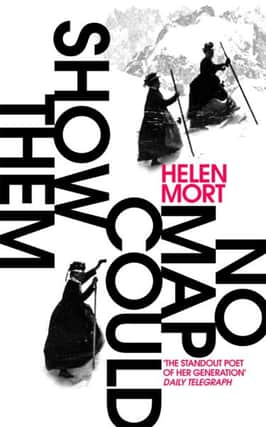Take me high: Women who shattered the glacier ceiling


In her second collection, No Map Could Show Them, Eric Gregory Award-winner Helen Mort uses this idiotic quote as a jumping-off point for her wonderfully playful poem An Easy Day For A Lady, in which she imagines early female climbers as “magicians of the Alps” who have the power to make the routes they follow vanish: “Turn round / to see the swooping absence / of the face, the undone glaciers, / crevasses closing in on themselves / like flowers at night.” It’s the perfect response to the chauvinism faced by the earliest female mountaineers. A climber herself, Mort doesn’t get angry at the men who insisted women couldn’t climb as well as they could – instead she takes their statements and dances elegantly around them. Similarly, in Ode To Bob she pays tongue-in-cheek tribute to the imaginary male companion that female climbers used to invent to avoid having to endure unsolicited advice from any men.
The centrepiece is a sequence dedicated to climber Alison Hargreaves, who died descending K2 in 1995. Mort is very good at imagining herself into some of her climbs; better at imagining her way into her personal life.
In the crowded field of mountain literature, this precise, sparky and constantly surprising book more than holds its own.